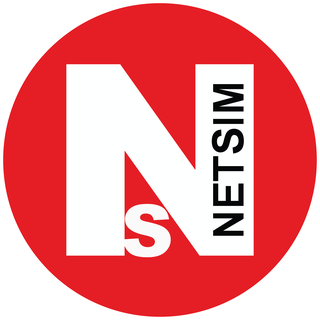Cyber physical systems (CPS) and IoT -- An Introduction
Introduction#
Cyber Physical Systems (CPS) are systems that link the physical world (e.g., through sensors or actuators) with the virtual world of information processing. This does not just mean the convergence. Many systems can be categorized as CPS. Let us consider the example of a smart grids. On the demand side the various domestic appliances (of end users) constitute the physical components, and data of demand load are collected by smart meters. These smart meters connect the physical world to cyber space. The demand load data is transferred via two-way communication channels that are used to measure and control the physical components. On the cyber (cloud) side computations are carried out by the objectives of utility maximization and cost minimization. Based on this a suitable real-time electricity price is calculated.
Internet of Things (IoT) is a network of physical devices, vehicles, buildings and other items embedded with electronics, software, sensors, actuators, and network connectivity that enable these objects to collect and exchange data. The IoT network allows objects to be sensed and/or controlled remotely across existing network infrastructure, creating opportunities for more direct integration of the physical world into computer-based systems, and resulting in improved efficiency, accuracy and economic benefit.
IoT is the platform on which cyber physical systems run.
Figure 19‑1: IOT Network Components and the TCP/IP stack running in the network devices
Components of IoT#
-
Sensors: Sensors are used to detect physical phenomena such as light, heat, pressure, temperature, humidity etc. Sensors are regarded as a revolutionary information gathering method to build the information and communication system which will greatly improve the reliability and efficiency of infrastructure systems. It follows IPv6 addressing system. IP addresses are the backbone to the entire IoT ecosystem. IPv6's huge increase in address space is an important factor in the development of the Internet of Things.
-
LowPAN Gateway: These are the Gateways to Internet for all the things/devices that we want to interact with. Gateway help to bridge the internal network of sensor nodes with the external Internet i.e., it will collect the data from sensors and transmitting it to the internet infrastructure. A 6LowPAN Gateway will have 2 interfaces, one is Zigbee interface connected to sensors (follows 802.15.4 MAC and PHY) and the other is WAN interface connected to ROUTER.
Figure 19‑2: The 6LowPAN Gateway's TCP/IP Stack at the wired and wireless Interfaces
6LoWPAN is an acronym of IPv6 over Low Power Wireless Personal Area Network. The 6LoWPAN concept originated from the idea that \"the Internet Protocol should be applied even to the smallest devices, and that low-power devices with limited processing capabilities should be able to participate on the Internet of Things.
Network Setup#
Open NetSim and click on Experiments> IOT-WSN> Introduction to cyber physical systems (CPS) and IoT> Multiple Sensor to Wired Node Sample click on the tile in the middle panel to load the example as shown in below Figure 19‑3.
Figure 19‑3: List of scenarios for the example of Introduction to cyber physical systems (CPS) and IoT
NetSim UI displays the configuration file corresponding to this experiment as shown below
Figure 19‑4.
Multiple Sensor to Wired Node Sample
Figure 19‑4: Network set up for studying the Multiple Sensor to Wired Node Sample
Procedure#
The following set of procedures were done to generate this sample:
Step 1: A network scenario is designed in NetSim GUI comprising of 4 Wireless Sensors, 1 Gateway, 1 Router, and 1 Wired Node in the "Internet of Things" Network Library.
Step 2: Before we actually designed this network, in the Fast Config Window containing inputs for Grid/Map Settings and Sensor Placement, the Grid Length and Side Length were set to 500 and 250 meters respectively, instead of the default 100 and 50 meters and we have chosen Manually Via Click and Drop option.
Step 3: The Ad hoc Link is used to link all the Sensors and the Gateway in an ad hoc basis.
The Ad hoc link properties is set to NO PATHLOSS for the channel characteristics.
Step 4: Right click on the Application Flow App1 Sensor App and select Properties or click on the Application icon present in the top ribbon/toolbar.
A Sensor Application is generated from Wireless Sensor 2 i.e. Source to Wired Node 7 i.e. Destination with Packet Size remaining 50 Bytes and Inter Arrival Time remaining 1000000 µs.
Step 5: Enable the packet trace and plots. Run the Simulation for 100 Seconds.
Output for Multiple Sensor to Wired Node Sample#
Figure 19‑5: Animation Window
Single Sensor to Wired Node Sample
Figure 19‑6: Network set up for studying the Single Sensor to Wired Node Sample
The following changes in settings are done from the previous sample:
Step 1: We have only one Sensor and the Sensor Application is generated between that Sensor and the Wired Node.
Step 2: Enable the plots and Packet trace.
Step 3: Run the Simulation for 10 Seconds.
Output for Single Sensor to Wired Node Sample#
Users can understand how the IP addresses are changing from IPv6 to IPv4 and vice versa with the help of packet trace file.
After simulation, open packet trace and filter PACKET_TYPE to Sensing and observe the columns SOURCE_IP, DESTINATION_IP, GATEWAY_IP and NEXT_HOP_IP
SOURCE_IP -- source node IP
DESTINATION_IP -- gateway IP/ destination IP
GATEWAY_IP -- IP of the device which is transmitting a packet
NEXT_HOP_IP -- IP of the next hop
-
Sensor and 6_LOWPAN_Gateways 1^st^ interface follows IPv6 addressing.
-
6_LOWPAN_Gateways 2^nd^ interface, Router and Wired Node follows IPv4 addressing.
-
From the screenshot below, users can identify the changing of IP addresses from source to destination.
Figure 19‑7: Screenshot of packet trace showing IP addresses are changing from IPv6 to IPv4 and vice versa







